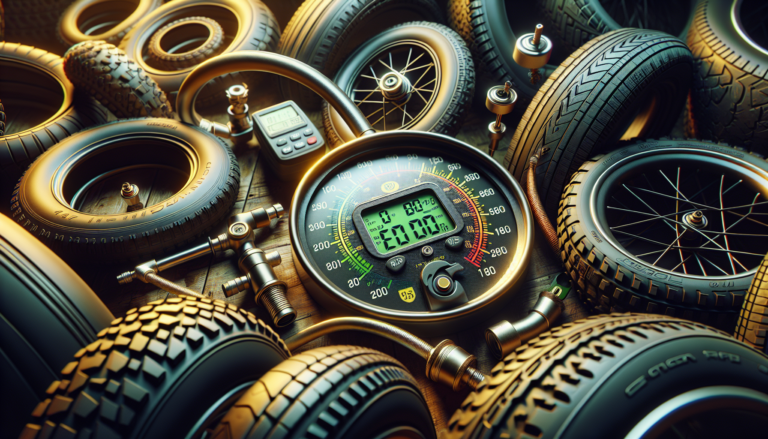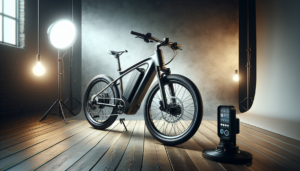Maintaining proper tire pressure is essential for every cyclist, whether you’re a casual rider or a competitive racer. The right PSI (pounds per square inch) in your bike tires can significantly impact your performance, comfort, and safety on the road or trail. In this comprehensive guide, we’ll explore everything you need to know about optimal tire pressure for your bike.
Understanding Bike Tire Pressure
What is PSI and Why It Matters
PSI is the standard unit of measurement for tire pressure. It represents the amount of air pressure inside your bike tires. The correct PSI ensures that your tires perform optimally, providing the right balance of grip, rolling resistance, and puncture protection.
Tire pressure that is too low can cause the tire to deform excessively, leading to increased rolling resistance and a higher risk of pinch flats. On the other hand, overinflated tires can result in a harsh ride, reduced traction, and increased vulnerability to road hazards.
The Importance of Proper Tire Pressure
Riding with the right tire pressure offers several benefits:
- Improved handling and cornering grip
- Reduced rolling resistance for better efficiency
- Enhanced comfort by absorbing road vibrations
- Lower risk of flat tires and rim damage
- Increased tire longevity
Neglecting to maintain proper tire pressure can compromise your safety and overall riding experience. It’s crucial to check and adjust your tire pressure regularly to ensure optimal performance.
Factors Influencing Optimal Tire Pressure
Tire Width and Pressure
The width of your bike tires plays a significant role in determining the appropriate pressure. Generally, wider tires require lower pressures compared to narrower ones. This is because wider tires have a larger air volume, allowing them to maintain their shape and performance at lower pressures.
Common tire widths for road bikes include 23mm, 25mm, 28mm, and 30mm. As tire width increases, the recommended pressure range typically decreases. For example, a 23mm tire may require 90-120 PSI, while a 28mm tire may work well with 60-90 PSI.
Rider Weight and Pressure
Your body weight is another crucial factor in determining the right tire pressure. Heavier riders generally require higher pressures to prevent the tires from deforming excessively under load. On the other hand, lighter riders can often get away with lower pressures for a more comfortable ride.
A good starting point is to refer to the manufacturer’s recommended pressure range, which is usually printed on the tire sidewall. You can then fine-tune the pressure based on your weight and riding preferences.
Bike Type and Pressure
The type of bike you ride also influences the optimal tire pressure. Different bike categories have specific tire pressure requirements based on their intended use and tire characteristics. Here’s a general overview:
| Bike Type | Typical Pressure Range |
|---|---|
| Road Bikes | 80-120 PSI |
| Mountain Bikes | 25-35 PSI |
| Hybrid/Commuter Bikes | 50-70 PSI |
Keep in mind that these are general ranges, and the optimal pressure for your specific bike may vary based on tire width, rider weight, and other factors.
Recommended PSI for Different Bike Types
Road Bikes
Road bike tires are typically narrow and have high thread counts (TPI), which allows for higher pressures. The recommended pressure range for road bikes is usually between 80 and 120 PSI, depending on tire width and rider weight.
For example, a 70kg (154lbs) rider on a bike with 25mm tires might start with 90-100 PSI and adjust based on preference. Lighter riders may opt for slightly lower pressures, while heavier riders may require higher pressures.
Mountain Bikes
Mountain bike tires are wider and have more aggressive treads compared to road tires. They are designed to provide maximum traction and shock absorption on rough terrain. As a result, mountain bike tires typically run at much lower pressures, usually between 25 and 35 PSI.
The exact pressure will depend on the tire width, rider weight, and the type of terrain you’re riding on. For technical trails with lots of roots and rocks, lower pressures around 25-28 PSI can provide better grip and control. For smoother trails or hardpack surfaces, slightly higher pressures of 30-35 PSI may be more efficient.
Hybrid and Commuter Bikes
Hybrid and commuter bikes often feature tires that are wider than road tires but narrower than mountain bike tires. These bikes are designed for a mix of paved and light gravel surfaces. The recommended tire pressure for hybrid and commuter bikes usually falls between 50 and 70 PSI.
Again, the optimal pressure will depend on factors such as tire width and rider weight. A good starting point for a hybrid bike with 35mm tires and an average-weight rider would be around 60 PSI. Adjust accordingly based on your specific setup and riding preferences.
Special Considerations for Tubeless Tires
Advantages of Tubeless Tires
Tubeless tires have gained popularity in recent years, particularly in the mountain biking and gravel riding communities. These tires eliminate the inner tube and instead rely on a special rim and tire design to create an airtight seal. Tubeless setups offer several advantages:
- Reduced risk of pinch flats
- Ability to run lower pressures for better traction
- Self-sealing properties for minor punctures
- Improved ride quality and comfort
Setting the Right Pressure for Tubeless Tires
When setting up tubeless tires, it’s essential to follow the manufacturer’s recommended pressure range. Tubeless tires often require a specific minimum pressure to maintain the airtight seal between the tire and the rim.
In general, tubeless tires can be run at lower pressures compared to traditional clincher tires with inner tubes. The absence of an inner tube reduces the risk of pinch flats, allowing for lower pressures without compromising performance.
For tubeless mountain bike tires, riders often experiment with pressures as low as 20-25 PSI for optimal traction and comfort on technical trails. Road and gravel riders may run tubeless tires at pressures ranging from 60-80 PSI, depending on tire width and rider weight.
Maintaining Your Bike Tire Pressure
How to Check Tire Pressure
Checking your tire pressure regularly is a simple but essential maintenance task. It’s recommended to check your pressure before every ride or at least once a week if you ride frequently. Here’s how to do it:
1. Acquire a reliable tire pressure gauge. Digital gauges tend to be more accurate than analog ones.
2. Locate the valve stem on your tire and remove the cap.
3. Press the gauge firmly onto the valve stem and hold it in place until you get a stable reading.
4. Compare the measured pressure to your target pressure and adjust accordingly.
If you don’t have a gauge, you can use a floor pump with a built-in pressure gauge for more convenience.
Tools for Maintaining Tire Pressure
To maintain proper tire pressure, you’ll need a few essential tools:
- Floor pump with a pressure gauge (for home use)
- Hand pump or CO2 inflator (for on-the-go adjustments)
- Tire pressure gauge (if your pump doesn’t have one)
- Valve adapters (if required for your valve type)
Invest in quality tools to ensure accurate and reliable tire pressure management. Regular maintenance will help extend the life of your tires and keep you rolling smoothly.
Adjusting Tire Pressure for Different Conditions
Weather and Temperature Effects
Ambient temperature and weather conditions can affect your tire pressure. As temperature increases, the air inside your tires expands, causing the pressure to rise. Conversely, colder temperatures lead to lower tire pressures.
A general rule of thumb is that tire pressure changes by about 1 PSI for every 10°F (5.6°C) change in temperature. So, if you set your tire pressure in a warm garage and then ride in cooler outdoor temperatures, you may need to add a few PSI to compensate.
Similarly, if you’re riding in hot weather or your tires are exposed to direct sunlight, the pressure may increase beyond your desired level. In this case, you may need to release some air to bring the pressure back down to your target range.
Terrain and Riding Style
The type of terrain you’re riding on and your riding style can also influence your optimal tire pressure. Here are some general guidelines:
- Smooth roads: Higher pressures for reduced rolling resistance and improved efficiency.
- Rough roads: Slightly lower pressures for better comfort and traction on uneven surfaces.
- Off-road trails: Much lower pressures for maximum traction, shock absorption, and puncture resistance.
- Aggressive riding: Higher pressures for better stability and control during high-speed cornering and braking.
- Comfort-oriented riding: Lower pressures for a plusher ride and improved vibration damping.
Experiment with small pressure adjustments to find the sweet spot that suits your riding style and the terrain you frequently encounter.
Common Mistakes and How to Avoid Them
Overinflation and Underinflation
One of the most common mistakes cyclists make is overinflating or underinflating their tires. Overinflation can lead to a harsh ride, reduced traction, and increased risk of tire damage from road hazards. Underinflation, on the other hand, can cause the tire to deform excessively, resulting in increased rolling resistance, poor handling, and a higher chance of pinch flats.
To avoid these issues, always refer to the manufacturer’s recommended pressure range and use a reliable gauge to monitor your tire pressure regularly.
Ignoring Manufacturer Recommendations
Each tire manufacturer provides specific pressure recommendations based on the tire’s design, construction, and intended use. Ignoring these guidelines and running pressures outside the recommended range can lead to suboptimal performance and even tire failure.
Always consult the tire sidewall or the manufacturer’s website for the appropriate pressure range. If you’re unsure or have any doubts, err on the side of caution and start with the middle of the recommended range, then adjust based on your individual needs and preferences.
Conclusion: Finding Your Optimal PSI
Determining the perfect tire pressure for your bike involves considering multiple factors, including tire width, rider weight, bike type, and riding conditions. While there are general guidelines and recommended ranges, the optimal PSI will vary from rider to rider.
To find your ideal pressure, start with the manufacturer’s recommendations and make small adjustments based on your personal experience. Pay attention to how your bike feels and performs at different pressures, and don’t be afraid to experiment within the recommended range.
Remember to check your tire pressure regularly, as it can fluctuate due to changes in temperature, riding conditions, and tire wear. By maintaining the right PSI, you’ll enjoy a safer, more efficient, and more comfortable ride every time you hit the road or trail.






